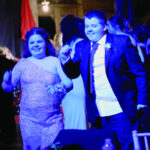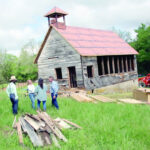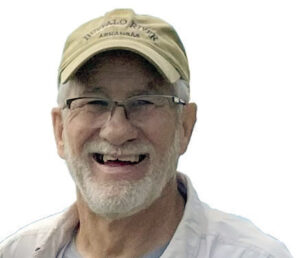In February the Barry County Museum will on occasion receive an inquiry related to Black history in the area.
Some of the curiosity may stem from a misconception due to the name of the Black School House on the museum campus, which was named after the Black family rather than the race. Or sometimes we are mistaken for the Barry County, Mich., museum.

Researchers are disappointed to find that there is very little documented Black history in Barry County, Mo., since there were hardly any African Americans who lived in Barry County during the greater part of the 20th Century.
A 1901 newspaper article declared that “Willis Dehoney, the only [Black] resident of Barry County, who lived in Capps creek township, has sold his farm and moved to Wichita, Kansas. This leaves Barry County without a colored resident.”
A 1910 paper also stated that “Monett has no [Black] population, in fact there is not a [Black] resident in Barry County.” A pamphlet advertising Cassville and Roaring River Spring from the 1920s published by the Commercial Club proclaimed, “Barry County, Missouri has Twenty-Five Thousand White Souls and not a Black One.”
This seems to be a point of pride in the community during this period. In 1921 Simon Perse of Eagle Rock sued J.T. Prier seeking damages in the amount of $30,000 for calling him a “[Black].” This local view on race seemed to prevail well into the 1950s.
A search on the internet will find Cassville on lists of sundown towns, meaning that Blacks having business or traveling had to leave town by the time the sun set. Some claim to remember a sign at the Cassville city limits proclaiming this rule.
Perhaps the economic impact of Table Rock Lake and the need for a tourist area to be perceived as welcoming played at part in changing views, or maybe just the march of time. According the 2020 Census, there were 102 residents in Barry County who identified themselves as Black or African American, so things aren’t the same in 21st Century Barry County.
But, that’s still less than the total of 254 persons in slavery in Barry County in 1861. The earlier Black history of the county mainly consisted of slavery records. Slaves were owned by 65 individuals in 1861, with a total assessed value of $118,275.
The largest slave owner was Daniel Blythe who owned 19. There were no huge plantations in Barry County, and the majority of slaveholders in the county owned 1 or 2 persons. Other than tax and census records, there are only the fragments of Black history in the county.
In 1838, “a free [Black] boy named Louis was granted license for citizenship, the bond being placed at $500.”
In 1844, Young J. Capps of Barry County placed an ad in the Springfield papers for a runaway slave name Almsted with a reward of $10.
In 1856, “a free [Black] named Hannah was granted a license to reside here,” according to Goodspeed’s 1888 history.
In 1862, a Black man was shot near the courthouse by a Federal Soldier. In 1893, Walter Scott threw a brick at the head of Black resident George Bullard in Cassville, causing a cut in Bullard’s cheek.
In 1894, Newt Hayden was lynched by a mob of 50 and hung from a telegraph pole at Monett. In 1921, George Coker and William Hawkins, two black men working as porters for the Frisco Railroad, were fined $10 in Monett for fighting.
Also in 1921, Barry County representative A.F. Hilker requested to have his Missouri House seat moved away from representative Walthall Moore, the first African American elected to the Missouri legislature, leaving a vacant spot next to Moore.
Sometimes, you can tell just as much by what’s missing from history as what’s actually there.
Jeremiah Buntin is a historian at the Barry County Museum. He may be reached at jbuntin@barrycomuseum. org.







My family was from Barry County. Near Thomas Hollar. There was also N***** Hollar nearby said to be where the freed families lived. I once found a freed men’s part of the Barry County Census which named three free black people. Last name was Cole man woman and child man’s first name was Nester he came from Indiana . Maybe someone can find more info with these leads William Cole was a resident of Barry county, a judge and a slave owner who freed his slaves about 1830.